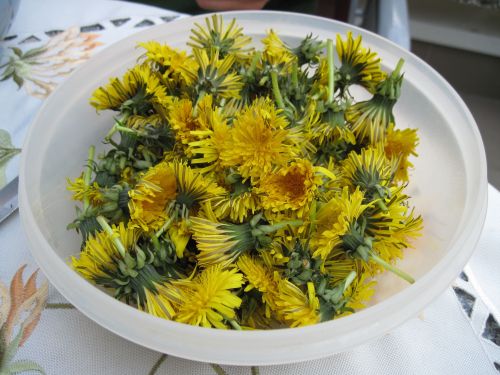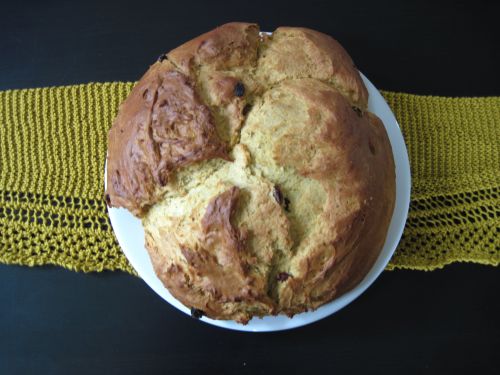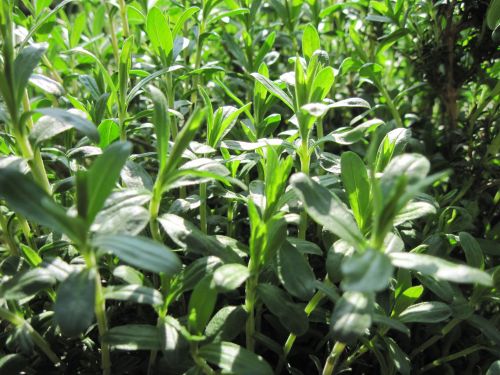Yellow Gold is Everywhere
It started yesterday as TC picked dandelions to make dandelion honey, a concoction of flowers infused in a sugar solution and then reduced to a syrup. It continued in the garter stitch with a lace border of my Beeswax scarf, started sometime in March and finished this afternoon. It culminated in the egg yolk bolstered hue of the Osterpinze, a sweet bread with Italian roots that is eaten in Styria at Easter. TC tried his hand at preparing one, jazzing up the classic recipe with anise seed and raisins doused in krupnik, a Polish honey vodka. The color of the hour: yellow gold.
This weekend we have been working on what I call the Mindful Kitchen Project. After two and a half years of sharing a kitchen, it was time to go through all the shelves, drawers, and storage space and scrutinize each object. Is it useful? How often do we use it? Is there an obstacle to us using it? If so, how can it be removed? What I have found is that we have much more than we think we need, starting with pots and pans. In the past, multiple pots of the same size have encouraged sluggish dishwashing and more countertop clutter. We removed 5 pots and pans and still have 12 left. It looks shocking to see that in print since we only have four burners on our stove, but the 12 in question are of a variety of sizes and materials from the stainless steel soup pot to the cast-iron skillet to the pressure cooker. At least now they are stacked so that I can just open the drawer and grab what I need in seconds without unstacking or searching for the right lid. Another factor to consider when deciding where to put things in the kitchen is how often they are needed. The items you use every day should be closest to the stove. We previously had a spice shelf within reach of the stove for quick access to seasonings – as well as a shelf full of spices in the pantry at the other end of the kitchen. Everything except two large jars of saffron and oregano (which I don’t use on a daily basis) is now housed on the shelf next to the stove. The new arrangement looks and feels great, though I’m sure we’ll still need to make some minor adjustments. It was a very satisfying weekend project to take a good look at the objects we have that allow us to create the tasty, nourishing food we call home cooking. Most have justified their existence and will continue to serve us well.

There’s still a little more yellow gold in the house, but not for long. We’ll burn the cat and rabbit beeswax candles this evening in the company of friends and polish off the Osterpinze along with some Easter eggs. If the deluge outside ever stops, perhaps we’ll make it up to the garden to harvest a horseradish root and grate a little to accompany the eggs. Hope you’re keeping dry and enjoying some tasty food – traditional or not.






